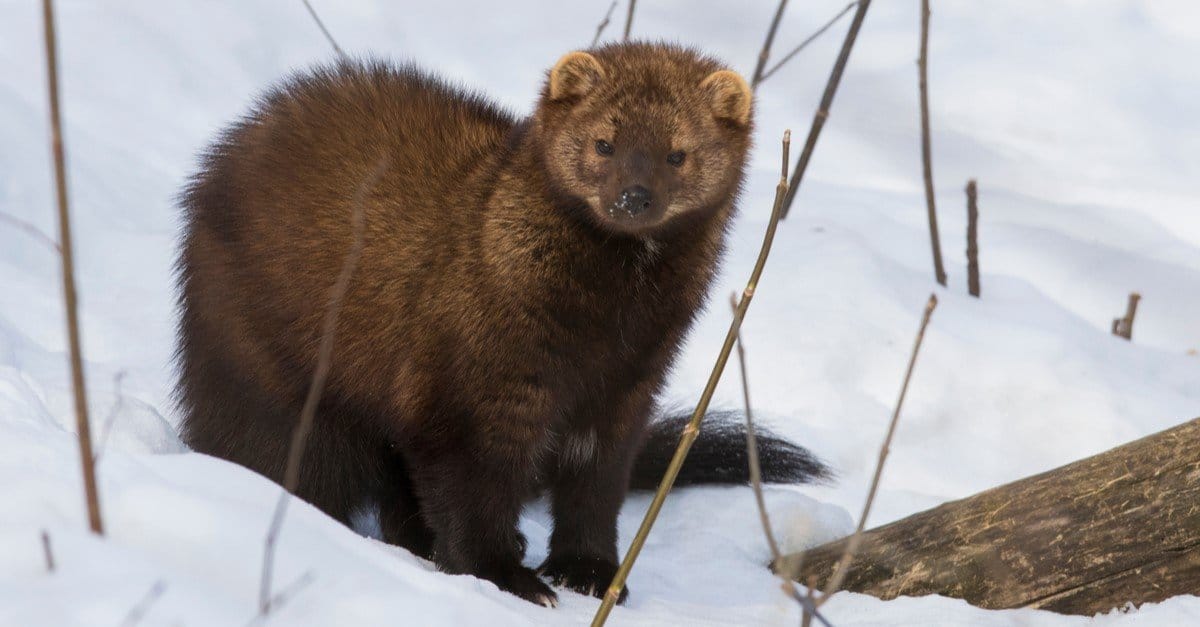
Meet the Fisher: Forest Phantom of the North
You might think a “fisher” is someone who catches fish—but in the animal world, a fisher is something entirely different. This agile, elusive mammal roams North American forests with surprising ferocity and skill. Here’s everything you need to know in this FAQ-style guide to one of the forest’s most misunderstood predators.
What is a fisher?
A fisher (Pekania pennanti) is a medium-sized carnivorous mammal native to North American forests. Despite its name, it doesn’t eat fish. Fishers belong to the weasel family (Mustelidae), which includes animals like martens, wolverines, and otters.
What do fishers look like?
Fishers are long-bodied and low to the ground, with short legs, bushy tails, and sharp claws. They’re about the size of a large house cat, typically weighing 4–13 pounds and measuring 2–4 feet from nose to tail.
They have thick, dark brown fur, which was once highly prized by the fur trade.
Where do fishers live?
Fishers live in dense forests across Canada and the northern United States, with smaller populations in the Sierra Nevada, the Pacific Northwest, and parts of the Northeast. They prefer mature forests with lots of cover, fallen logs, and tree cavities for denning.
What do fishers eat?
Fishers are opportunistic hunters and will eat a wide variety of prey:
- Small mammals like squirrels, mice, and rabbits
- Birds and their eggs
- Insects and carrion
- Berries and mushrooms (occasionally)
Fun fact: Fishers are one of the only predators that regularly kill porcupines! They circle and attack the face and underside—areas without quills—until the porcupine weakens.
Are fishers dangerous to pets?
Fishers generally avoid people, but they can pose a threat to small outdoor animals like cats, rabbits, or chickens, especially in rural or forested areas. Pet owners in fisher territory should be cautious.
Are fishers endangered?
Fishers were once nearly wiped out in parts of the U.S. due to logging and trapping. But thanks to conservation and reintroduction programs, their numbers are rebounding in many areas. Still, some populations—especially in the Pacific states—are considered threatened or endangered.
Do fishers hibernate?
Nope! Fishers stay active year-round, even through the snowiest winters. Their thick fur and strong climbing ability help them thrive in cold forest habitats.
Are fishers smart?
Yes! Fishers are clever and resourceful hunters, able to navigate trees, crevices, and complex terrain. Their intelligence helps them outwit prey—and avoid becoming prey themselves.
Why are they called “fishers” if they don’t fish?
The name likely comes from the French word fiche or fisse, used by early trappers, possibly referring to the European polecat. The name stuck—even though fishers rarely (if ever) eat fish.
So… Why are they sometimes called “fisher cats”?
Despite the nickname, fisher cats aren’t cats at all. The term “fisher cat” is a misleading colloquial name.
- As noted above, the “fisher” part likely comes from early French fur traders, who used the word fisse or fiche—possibly referencing a similar European animal, like the polecat (which also isn’t a cat).
- The “cat” part was probably added later by English speakers, because:
- Fishers resemble cats in size and shape (long bodies, thick fur, and pointed faces).
- They climb trees like cats and are stealthy, agile, and solitary hunters.
- Some people mistakenly believed they were a type of wildcat.
But they’re not related to cats?
Correct! Fishers are mustelids, meaning they’re more closely related to weasels, otters, badgers, and wolverines than to any feline. They share no biological connection to domestic or wild cats.
So should we say “fisher” or “fisher cat”?
“Fisher” is the correct name. Wildlife experts, biologists, and field guides stick to just “fisher.”
“Fisher cat” is a regional slang term—most common in the Northeastern U.S.—and is best avoided if you want to be accurate.
Bottom line: “Fisher cat” is a holdover from confusion and folklore. The animal may act a bit like a cat, but it’s 100% weasel family—and 100% wild.
In Summary:
The fisher is a secretive, sharp-toothed forest dweller with a taste for small mammals and a reputation for bravery. While you’re not likely to spot one in the wild, these nocturnal hunters are a fascinating—and important—part of North America’s woodland ecosystems.
Want to meet more wild and mysterious creatures? Stick around—there’s always more to discover.
More photos below ↓











Disclaimer: This blog post is for edutainment purposes only and may not be entirely accurate.






